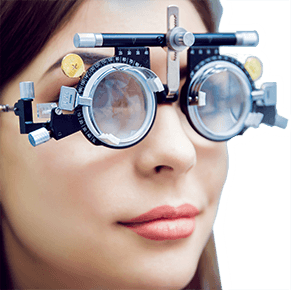Understanding your contact lens prescription

Your contact lens prescription contains specific information to ensure your contact lenses are safe, comfortable and provide excellent vision.
In many countries, your eye doctor must give you a copy of your prescription at the conclusion of your contact lens exam and fitting — even if you don't ask for it.
If you don't have a contact lens prescription, schedule an appointment with an eye doctor near you.
A contact lens prescription includes several terms, abbreviations and measurements that may look like secret code. Once you know what each of these means, your prescription will be easy to understand.
Below is an example of a contact lens prescription. Place your cursor over a term or number, and it will be defined:
In addition to the above information, if you wear disposable contact lenses, your prescription may include how often your contact lenses should be replaced (once a month, every two weeks, once a week, daily, etc).
It is important to know that contacts and eyeglass prescriptions are not the same. So even if you already have an eyeglass prescription, you will need a separate contact lens prescription before you can purchase contacts.
Can you buy contact lenses without a prescription?
In most countries, you must have a valid contact lens prescription written by an eye doctor before you can buy any type of contact lens.
This includes colored contact lenses or special-effect lenses that are designed only to change the appearance of your eyes and do not contain lens power to correct your vision.
Your eye doctor can provide you a copy of your contact lens prescription after a thorough contact lens exam and fitting.
Why do you need a prescription?
It most places in the world, it is illegal to sell contact lenses without a prescription, and for good reason.
A contact lens is a medical device, and a poorly fitted lens — or one made from a material not well-suited to your eyes — can cause distorted vision, discomfort, infection, inflammation, swelling and abrasion. In rare cases, even permanent eye damage and blindness can occur.
Also, you should never share your contact lenses with others, including colored contacts and theatrical contacts. Sharing contact lenses can cause potentially sight-threatening eye infections and diseases.
When do contact lens prescriptions expire?
Most contact lens prescriptions are valid for at least one year, and the expiration date will be written on your prescription.
When your prescription expires, you won't be able to buy more replacement contact lenses until your eye doctor updates it. This typically will require an eye exam to insure that contact lens wear isn’t affecting the health of your eyes and to see if you require a change in the power of your lenses.
If you are diagnosed with a contact lens-related eye problem, it's unlikely that you'll have to discontinue wearing contacts permanently. In most cases, a change to a different type of lens or different contact lens solution — or a modification of how long you wear your lenses and how frequently you replace them — will solve the problem.
Where can you buy contact lenses?
Once you've been properly fitted by your eye doctor and have a valid contact lens prescription, you have the option of buying contact lenses from a wide variety of sources.
You typically can use your contact lens prescription to shop for lenses on the Internet and elsewhere, and you aren’t required to buy your contact lenses from your eye doctor.
Page published on Thursday, January 23, 2020






